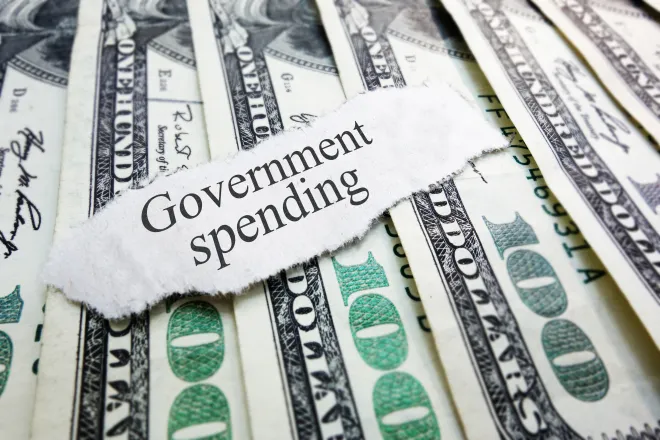
Where is my tax refund?
So, you figured out your deductions or credits, calculated how much you owed in taxes and successfully filed your return (for free, hopefully). If you’re sitting around wondering where your money is, you’re not alone. Lucky for you, the IRS offers several ways to track your tax return.
How do I track my tax return?
Once you have filed, there are three options for tracking your refund:
Online: You can get your refund status on the IRS website here. See below for the information you’ll need to have handy.
App: The IRS2Go app is available for both iPhone (iOS) and Android users. You can download it using:
Phone: The IRS refund hotline is 800-829-1954. This option is especially useful for those who do not have internet access.
What information do I need to track my tax return?
To track your tax return, there are three things you need:
- Your Social Security number or Individual Taxpayer Identification Number (ITIN).
- Your filing status: single filer, married filing jointly, married filing separately or head of household. Find out what these mean here.
- Your exact refund amount.
When can I check on my refund?
If you e-filed: You can check your refund after 24 hours. The IRS recommends getting in touch if you haven’t received your tax refund after 21 days.
If you filed by mail: You won’t be able to check your status for four weeks if you mailed in your taxes, but you may have already received your refund by that time. If you haven’t received your refund after more than six weeks, the IRS recommends that you get in touch.
What is the tax refund schedule?
The IRS refuses to guarantee the day that you’ll get your refund. It also depends on how you file and whether or not you get your return via direct deposit or check. For most people though, the IRS issues refunds around 21 days after filing.
What are the tax return statuses?
When you check on your return, there are three different statuses you might get:
- Your return has been received.
- Your refund has been approved.
- Your refund has been sent.
Why am I not getting my refund?
There are a number of different reasons why your refund may be held up. There might be a delay if:
- Your return includes any errors or is incomplete.
- You’ve been the victim of identity theft or fraud.
- You’ve been audited. (Here’s some information if that’s the case.)
- You filed for the earned income tax credit or the additional child tax credit. By law, the IRS cannot issue your refund before mid-February.
- You owe back taxes, state taxes, student loans or child support. In some cases, the IRS will put your refund toward the money you owe. You will receive a letter from the IRS explaining if your refund was used to pay another debt you owe.
- You’ve been the victim of a scam. Read more about the types of scams that are popular recently here and here.
Can I get my tax refund early?
Short answer: no.
No one — the IRS, a bank or anyone else — can give you immediate access to your tax refund. That said, some tax preparation companies do offer options to give you access to money sooner, either by refund anticipation checks (RAC) or a refund advance loan (RAL).
What’s the difference between refund advance loans and refund anticipation checks?
A refund advance loan, or RAL is a short-term loan that is usually paid to you after filing or shortly thereafter. Some tax preparers like H&R Block, TurboTax and Jackson Hewitt widely advertise the promise of quick money — as much as $3,500 — sometimes on the same day as filing.
This money is not your tax refund. It is a loan that must be paid back, regardless of how much money you end up getting from the IRS. If your refund is less than anticipated for whatever reason, you will still be held accountable for paying the lender back, often with interest. Sometimes, additional fees are applied, or the money will be deposited on a prepaid card that comes with tons of additional fees, even for paying your bills or withdrawing cash. Some people compare these services to payday lenders.
A refund anticipation check, or RAC lets you put off paying for the tax preparation service you use to file your taxes. Typically, you’ll agree to pay an additional fee to have the cost of tax preparation deducted from your refund amount. Once the IRS issues your refund, the preparer deducts this fee and the cost for preparing your taxes and then gives the rest of the money to you. Keep in mind that if you don’t have the money to use a paid tax service, you may be able to file completely for free without worrying about any of these fees.
It’s not always clearly explained, but both of these options usually involve a temporary bank account being set up in your name, which is how the preparer takes out their portion of your refund. A ProPublica analysis of IRS data found that in 2018, around 14% of tax filers either got a RAL or a RAC. These days, RACs are far more common than RALs. Loans used to be very popular before regulators cracked down on them.
Previously: How to File Your State and Federal Taxes for Free in 2020
About this guide:
ProPublica has reported extensively about taxes, the IRS Free File program and the IRS. Specifically, the ways in which the for-profit tax preparation industry — companies like Intuit (TurboTax), H&R Block and Tax Slayer — has lobbied for the Free File program, then systematicallyundermined it with evasive search tactics and confusing design. These companies also work to fill search engine results with tax “guides” that sometimes route users to paid products.
















